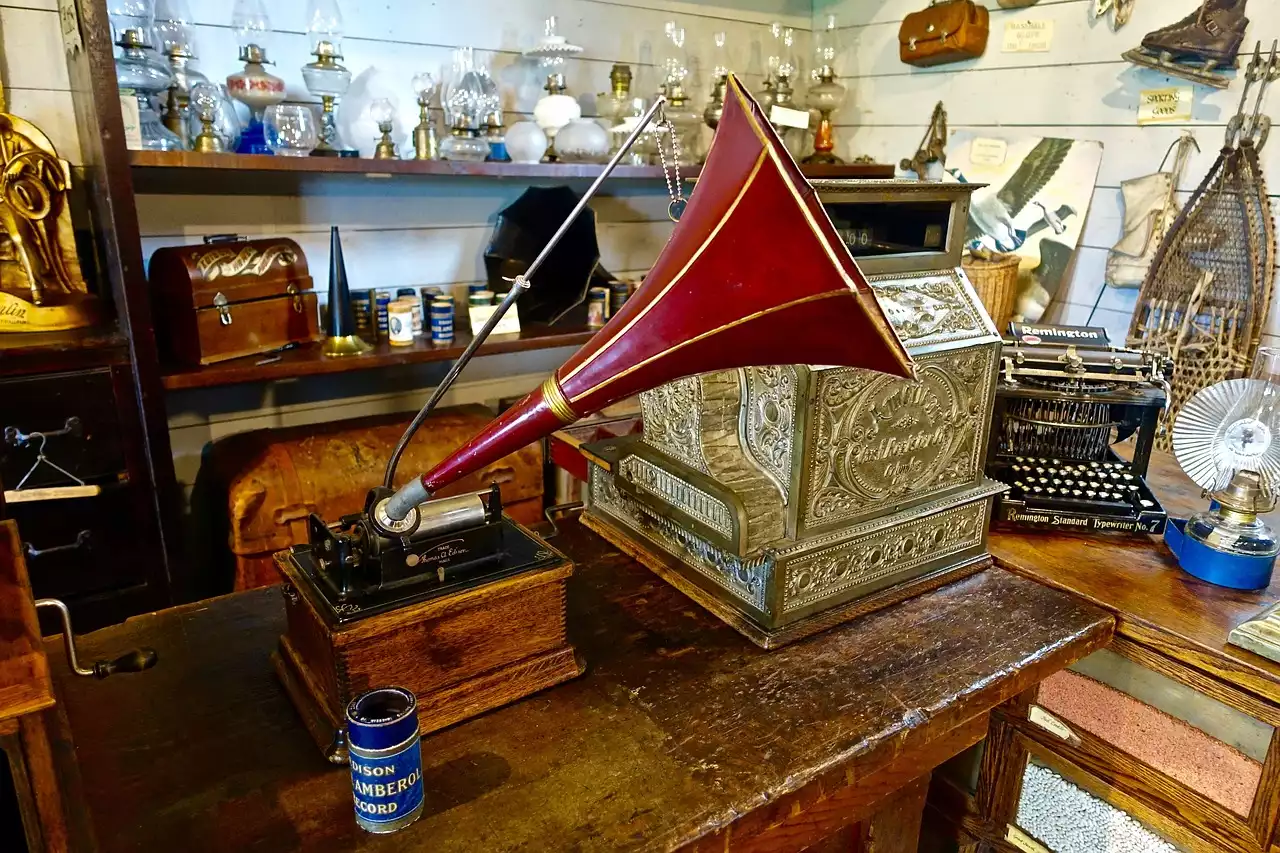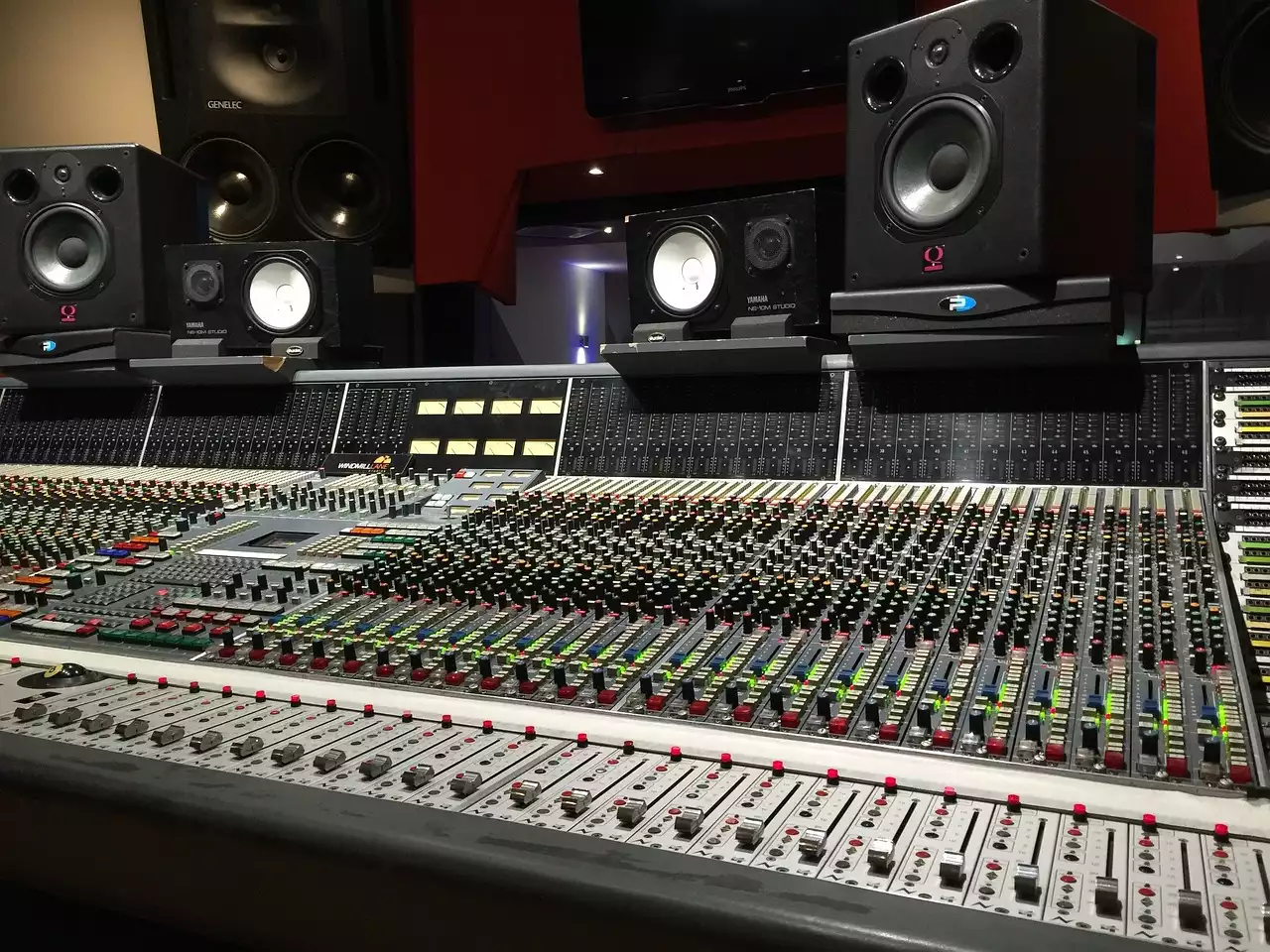Introduction
Welcome to the fascinating world of phonograph history! In this article, we will embark on a journey back in time to explore the origins and evolution of this iconic piece of audio technology. From its humble beginnings in the late 19th century to its profound impact on the music industry, the phonograph holds a special place in our cultural heritage. Join us as we step into the shoes of Thomas Edison, the inventor of the phonograph, and delve into the challenges he faced while perfecting his creation. Discover the various iterations and improvements made over the years, from the early cylinder players to the more familiar disc-based models. We'll also delve into the significance of the phonograph in preserving historical recordings, giving voice to artists long gone. Whether you are an avid collector, a history enthusiast, or simply curious about the origins of recorded sound, this article will provide you with a comprehensive overview of the phonograph's fascinating journey. Get ready to immerse yourself in a world of nostalgia and technological wonder as we uncover the captivating story of phonograph history. Let's embark on this enchanting exploration together!
1903 Edison Phonograph Recording Demo
Invention of the Phonograph
The invention of the phonograph can be attributed to the brilliant mind of Thomas Edison. In 1877, after numerous trials and errors, Edison successfully created the first practical phonograph. This groundbreaking device, also known as a talking machine, was capable of recording and reproducing sound. The phonograph consisted of a rotating cylinder wrapped in tin foil and a stylus that etched sound waves onto the foil. When the cylinder was played back, the stylus would trace over the grooves, reproducing the recorded sound. This invention marked a turning point in history, as it was the first time in human civilization that sound could be captured and played back at will.
Edison's phonograph, although revolutionary, had its limitations. The tin foil cylinders were fragile and had poor sound quality. However, this did not deter inventors and entrepreneurs from recognizing the immense potential of the phonograph. They saw an opportunity to refine and improve upon Edison's design, leading to the birth of countless variations and advancements in the years to come. One of the most notable improvements was the transition from tin foil cylinders to wax cylinders, which offered better sound quality and durability.
Invention of the Phonograph
As the popularity of the phonograph grew, so did the number of manufacturers entering the market. Companies like Columbia, Edison, and Victor Talking Machine Company (later known as RCA Victor) emerged as major players, each introducing their own innovations and contributing to the rapid evolution of the phonograph. These advancements included the introduction of disc-based models, which eventually became more prevalent than cylinder players. The disc-based phonographs, utilizing discs made of shellac or vinyl, offered improved sound and were easier to manufacture in large quantities.
The phonograph quickly became a staple in households across the globe. It brought music and entertainment into people's homes, revolutionizing the way we consume and experience sound. The ability to listen to recorded music at any time was a luxury that was previously unimaginable. The phonograph's impact on popular culture cannot be overstated, as it played a vital role in shaping the music industry and transforming the way we appreciate and enjoy music.
The Phonograph
Popular Phonograph Models and Brands
Throughout the history of the phonograph, numerous models and brands have left their mark on the industry. Let's take a closer look at some of the most popular and influential phonograph models and the companies behind them.
Edison Phonograph
The Edison Phonograph Company, founded by Thomas Edison himself, was a pioneer in the phonograph industry. The company introduced various models, including the famous Edison Standard Phonograph and the Edison Concert Phonograph. These models featured improved sound quality and reliability compared to their predecessors. The Edison Phonograph Company's commitment to innovation and quality solidified their position as one of the leading manufacturers in the early days of the phonograph.
Thomas Edison and the phonograph - 1877
Columbia Phonograph Company
The Columbia Phonograph Company, founded in 1887, quickly became a major player in the phonograph market. The company introduced the Columbia Phonograph, which gained popularity for its affordability and reliability. Columbia also played a significant role in the development of disc-based phonographs, introducing the Columbia Graphophone, a disc-based model that rivaled Edison's cylinder players. The Columbia Phonograph Company's contribution to the phonograph industry cannot be overlooked, as they helped popularize disc-based formats and expand the accessibility of recorded sound.
Columbia Graphophone Phonograph
Victor Talking Machine Company
The Victor Talking Machine Company, later known as RCA Victor, was another prominent player in the phonograph industry. The company's flagship model, the Victor Victrola, became synonymous with high-quality sound and craftsmanship. The Victrola featured an elegant design and superior sound reproduction, making it a favorite among audiophiles. The Victor Talking Machine Company's dedication to innovation and superior sound quality solidified their reputation as a leading manufacturer in the phonograph industry.
Victor Talking Machine Co.
Famous Phonograph Manufacturers and Models
The phonograph industry saw the rise of several famous manufacturers and their iconic models. Let's explore some of these renowned manufacturers and the models that became synonymous with quality and innovation.
what is a phonograph?
The Gramophone Company and the HMV Model
The Gramophone Company, founded in 1897, was a British record company that played a significant role in the development of the phonograph industry. The company introduced the His Master's Voice (HMV) model, featuring a distinctive logo depicting a dog listening to a phonograph. The HMV model became a symbol of quality and became highly sought after by collectors. The Gramophone Company's commitment to producing high-quality recordings and their partnership with renowned artists cemented their place in phonograph history.
The Berliner Gramophone Company and the Berliner Gramophone
The Berliner Gramophone Company, founded by Emile Berliner, introduced the Berliner Gramophone, a disc-based phonograph that utilized flat discs instead of cylinders. This innovation allowed for mass production and distribution of recorded music, revolutionizing the industry. The Berliner Gramophone Company's contribution to the development of the disc-based phonograph cannot be overstated, as it paved the way for the dominance of disc formats in the years to come.
The Future of the Phonograph
In today's digital age, where music is primarily consumed through streaming services and digital downloads, the role of the phonograph has evolved. However, the allure of analog sound and the nostalgic appeal of the phonograph have not faded away. Vinyl records, once deemed obsolete, are experiencing a resurgence in popularity. Audiophiles and music enthusiasts appreciate the warm, rich sound that vinyl records offer, creating a unique listening experience that digital formats cannot replicate.
In addition to the resurgence of vinyl, modern advancements have also allowed for the development of high-fidelity phonographs that combine the charm of analog sound with modern convenience. These modern phonographs, equipped with advanced technology and connectivity features, cater to both traditionalists and audiophiles, providing a bridge between the past and the present.
The future of the phonograph lies in its ability to adapt and evolve with changing technologies and consumer preferences. While digital formats dominate the music industry, the phonograph continues to hold a special place in the hearts of collectors, enthusiasts, and music lovers alike. Its enduring legacy as the pioneer of recorded sound ensures that the phonograph will forever be a cherished piece of our cultural heritage.
From Phonographs to Spotify
Conclusion
As we conclude our journey through phonograph history, we are reminded of the profound impact this invention has had on our lives. From Thomas Edison's humble beginnings to the diverse range of models and brands that followed, the phonograph has left an indelible mark on the music industry and our cultural heritage. Its ability to capture and preserve historical recordings has given voice to artists long gone, allowing us to experience their artistry and appreciate their contributions.
Although the phonograph has undergone significant transformations over the years, its enduring appeal and nostalgic charm remain intact. Whether it's the crackle of a vinyl record or the sleek design of a modern phonograph, the magic of recorded sound continues to captivate and inspire. So, let us celebrate the phonograph as a testament to human ingenuity and innovation, and may its enchanting story continue to resonate with generations to come.







